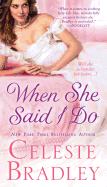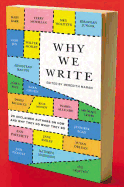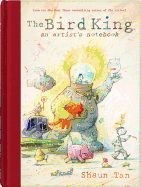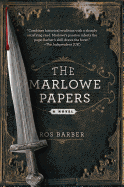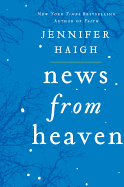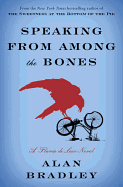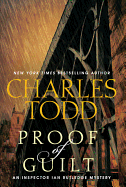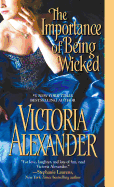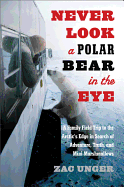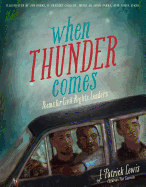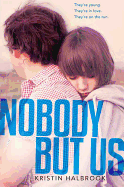Friday, February 1, 2013
The classic 1968 memoir Coming of Age in Mississippi by Anne Moody has just been released on audio by Tantor Media. Moody was raised on a tenant farm during the pre-Civil Rights era, and later joined the NAACP, CORE and SNCC, challenging a racist society with courage and pride. Another book about the same era is Called to the Fire: A Witness to God in Mississippi by Chet Bush (Abingdon Press), the story of Dr. Charles Johnson, an African American preacher who went to Mississippi in 1961, during the summer of the Freedom Rides. As a witness to the infamous "Mississippi Burning" case, he went on to become a leader in the Civil Rights movement.
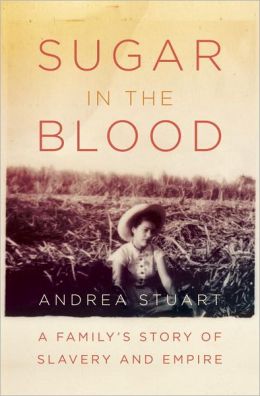
The Healing by Jonathan Odell (Doubleday) is set on a plantation where a reputed healer unexpectedly influences generations of slaves and free people. It's a "compelling work that can stand up to The Help in the pantheon of Southern literature." Attica Locke, in The Cutting Season (Harper, $25.99), sets a mystery on a former plantation--now hosting weddings--managed by a woman who has connections with the place through her slave and freed ancestors.
And poetry: The Collected Poems of Lucille Clifton 1965-2010 (BOA Editions)--770 pages of some of the best contemporary poetry around. In Missing You, Metropolis (Graywolf), Gary Jackson, winner of the 2009 Cave Canem Poetry Prize, writes about comic book worlds, racial isolation, Kansas--he's playful, serious, sophisticated. --Marilyn Dahl, book review editor, Shelf Awareness
Revenge: Eleven Dark Tales
by Yoko Ogawa, transl. by Stephen Snyder
Yoko Ogawa's Revenge is a delicious mosaic that concerns much more than its titular subject. These 11 compulsively readable tales that become increasingly multilayered and interlocked are elegant and literate, unvarnished outtakes from reality, disturbing glimpses at the calamities of urban existence.
Every story is told by a different unnamed character. A woman stops into a bakery that appears to be momentarily untended and waits for a clerk who never appears. A shy, lonely girl asks her school friend to accompany her on a lunch date with the wealthy father she's never known. A writer takes a room in an old apartment house where the widow who owns it is growing five-pronged carrots that look remarkably like human hands. A beautiful nurse gets tired of waiting for a married doctor to tell his pregnant wife that he wants a divorce.
Ogawa's characters are subtle and quirky; they have real-world jobs and notice different kinds of details. The stories unexpectedly dovetail: the narrator of one story, for example, is the mother of another's narrator. These are tragedies within tragedies, so that an accident on the highway that slows down traffic in one story becomes the subject of the following one.
By the end, Revenge has circled around to its own beginning in an elaborate spiderweb of storylines, and the reader is left facing the terrifying interconnectedness of life, where our narratives all crisscross and our pivotal moments are merely plot bumps in everyone else's stories. --Nick DiMartino, Nick's Picks, University Book Store, Seattle, Wash.
Discover: An accidental tragedy and several murders are entangled in a byzantine mesh of interlocking stories in Yoko Ogawa's very human palette of life's darknesses.
My One Square Inch of Alaska
by Sharon Short
In a fresh take on the coming-of-age road trip, the heroine of Sharon Short's poignant novel has a goal: for her little brother to realize his dream of claiming to own My One Square Inch of Alaska.
Teenager Donna Lane narrates her story, which lends a sweet honesty to the tale (and suggests its suitability for a mother-daughter book club pick). In postwar industrial Ohio, Donna has successfully combined high school, after-school jobs and de facto mothering to Will, her 10-year-old brother. Ever since Daddy told them he'd taken their mother to a cancer clinic in Florida, from which she never returned, he's been listless and often absent, providing Donna and Will with bare-bones sustenance and intermittent parenting.
Even with her responsibilities, Donna manages to maintain a social life and a secret modeling job, tucking away her small savings for a planned post-graduation escape to New York City and a career in fashion design. But when Will becomes gravely ill and begs Donna to take him and his rescued Husky to see Alaska, she follows her philosophy and "makes a small choice" that sets the story in motion.
Full of heart, My One Square Inch of Alaska evokes a specific slice of 1950s Americana, a rural town that appears bucolic but simmers with McCarthyism and labor strife. In Donna, Short presents a heroine forced into a youthful maturity that doesn't rob her of optimism, loyalty and amazing good sense. --Cheryl Krocker McKeon, bookseller, Book Passage, San Francisco
Discover: A fresh road-trip novel featuring a teenage girl, her dying brother and their dog as they drive from Ohio to the Alaska territory.
The Marlowe Papers
by Ros Barber
Ros Barber knows about poetry--she has written three collections--and she knows about Christopher Marlowe (1564-1593), the subject of her doctorate in English literature and additional scholarly articles. What better way, then, to introduce the Elizabethan poet and playwright to a greater readership than for Barber to write a novel in verse, narrated by the man himself? The Marlowe Papers was first released in the U.K. to great acclaim; now available to readers here, it is a must-read for anyone interested in Marlowe, William Shakespeare or 16th-century English history.
In blank verse (as Marlowe used in his plays), Barber chooses to let Marlowe narrate his own story, beginning with his supposed death in a bar fight. In this fictionalized memoir, Marlowe escapes the knife and is forced into hiding. While exiled, he continues to write under an assumed name: William Shakespeare. In addition to addressing the Marlowe-Shakespeare authorship question, Barber allows her Marlowe to confess much of what has been ascribed to him by historians: his intelligence and charm, his sexual liaisons with both men and women, his dealings as a spy on behalf of Queen Elizabeth, his alleged atheism. Barber's use of verse may surprise readers initially, but the writing is superb, the plot moves quickly and Marlowe's story is compelling. --Roni K. Devlin, owner, Literary Life Bookstore
Discover: An award-winning, highly original novel in verse about the life of Christopher Marlowe--even after the world believed him dead.
News from Heaven: The Bakerton Stories
by Jennifer Haigh
Jennifer Haigh (Faith) sets the interconnected short stories of News from Heaven in fictional Bakerton, Pa., a tight-knit community that was once a thriving coal-mining town. She shines a spotlight on some of the townspeople--those who have stayed and those who have fled--and how Bakerton remains a part of who they are, the fabric of their very being, even amid a world that's ever-evolving.
The stories take place from World War II through the end of the 20th century. The past might be past, but it remains active amid each of these 10 sensitively drawn tales: a young Polish girl moves from Bakerton to New York City to become a housemaid for a Jewish family; a teenager's life is upended when a long-lost aunt returns to town; the tragic homecoming of a wayward brother transcends his sister's perceptions; a 50-year-old woman finds love for the first time; a widow is forced to view the sad truth about her deceased husband's life.
Themes of struggle, loss, regret and acceptance emerge as Haigh weaves subtle glimmers of spirituality amid personal epiphanies that surprise in unexpected ways and reform each story with deeper meaning. Fans of Haigh's work will be pleased to find some characters returning from her debut novel, Baker Towers, but it's not necessary to have read that book before savoring these poignant, compassionately told stories. News from Heaven, however, might prove the perfect inspiration to seek it out. --Kathleen Gerard, blogger at Reading Between the Lines
Discover: A collection of poignant stories about those who have stayed and those who have fled the fictional town of Bakerton, Pa.
Mystery & Thriller
Speaking from Among the Bones
by Alan Bradley
Eleven-year-old Flavia de Luce gets more clever with age. In Speaking from Among the Bones, the fifth mystery in Alan Bradley's popular series (with several more promised), Flavia is still the smartest prepubescent sleuth in the history of whodunits.
Something's up in the crypt at St. Tancred's Church, and the organist has gone missing. St. Tancred himself is being exhumed, and Flavia is not welcome at the proceedings. But how can she resist? Using her wile, wit, wide-eyed innocence ("After all, I was christened Flavia Tancred de Luce," she insists) and reliable skills as a chemist, Flavia works her way beneath the village church and into the double mystery: What happened to the organist? And why all the secrecy surrounding the tomb?
Flavia narrates her adventures, informing readers that the Christmas holidays were "just a couple of months ago," a reference to I Am Half-Sick of Shadows, the fourth in the series. Fans will nod, while newcomers to Bradley's British cozies easily catch on. The familiar characters return: Father de Luce; Mrs. Mullet, housekeeper of the perennially endangered Buckshaw estate; the badgering older sisters, Feely and Daffy; and Inspector Hewitt, once again certain he'll solve the crime but forced to defer to Flavia. The youthful detective also joins forces with a new character: Adam Sowerby, fellow sleuth and chemist, who knows how to use a daffodil when necessary.
All ends well, as Flavia's adventures do. But this time, there's a clifhanger ending. Stay tuned. --Cheryl Krocker McKeon, bookseller, Book Passage, San Francisco
Discover: Young Flavia de Luce once again outsmarts the criminals as well as the local constabulary to solve crime in her 1950s English village.
Proof of Guilt
by Charles Todd
Fans of Charles Todd's Inspector Ian Rutledge will be happy to see him back in action in Proof of Guilt. The book opens with a hit-and-run victim; the only clue to the dead man's identity is a rather ornate watch in his pocket. Rutledge traces the watch back to French, French, and Traynor--a firm of wine importers--and deduces that the dead man must be Lewis French, the head of the English branch of the firm.
But then Lewis French's sister informs Rutledge that the dead man is not her brother, and the inspector is back at square one: Who is the dead man? Where is Lewis French? Was he involved in the murder?
The questions get bigger as people connected to the case keep disappearing; Rutledge suspects another dead body may be linked to the case. The investigation will send him from Essex to London to Surrey and back again, in an attempt to find the truth.
As always, Rutledge's character is what makes Todd's story most interesting. The shell-shocked World War I veteran is haunted by the voice of his slain comrade Hamish, who offers Rutledge advice--and has a knack for warning him to duck in the nick of time. The mystery itself is a bit convoluted, but the authentically likable personality of Inspector Rutledge rescues it. Devotees of World War I-era fiction--such as the Charles Todd's other series starring Bess Crawford or Jacqueline Winspear's Maisie Dobbs novels--will doubtless find Proof of Guilt fascinating. --Jessica Howard, blogger at Quirky Bookworm
Discover: Inspector Ian Rutledge must find out who a dead man is before he can determine who killed him.
Romance
When She Said I Do
by Celeste Bradley
Celeste Bradley (Fallen) brings readers a sizzling new Regency romance that will tug at their heartstrings and tickle their funny bones with When She Said I Do.
Calliope Worthington never expected to marry, accepting she would remain in the bosom of her tightly knit, madcap family. However, when a rainstorm sends the traveling Worthingtons scurrying into a dark manor house for shelter, Callie finds herself caught up in a misunderstanding involving a strand of pearls, the reclusive lord of the manor, Ren Porter, and a compromising situation. To stop a duel between Ren and Callie's brother, Callie and Ren make a bargain. Callie will remain at the estate as Ren's wife until she has earned every pearl on the necklace he caught her borrowing. His plans for how she'll earn them astonish Callie--and tantalize her.
Ren Porter's injuries in service to the Crown burned half his face and crippled him, leaving him a drunken wreck of his former self. He never expected a choice tidbit like Callie to fall into his lap and he intends to take full advantage of the situation. However, Ren gets more than he bargained for when his spitfire bride proves to be the cure he needed, taking his life and estate from wretched to wonderful. When the pearls run out, can he convince her to stay?
Callie's hilarious misadventures, Ren's transformation from beastly grump to princely husband and plenty of scorching love scenes make their love story one readers will want to enjoy again and again. --Jaclyn Fulwood, youth services manager at Latah County Library District and blogger at Infinite Reads
Discover: A sweetly sizzling Regency romance sure to tickle your funny bone.
The Importance of Being Wicked
by Victoria Alexander
Victoria Alexander (My Wicked Little Lies, The Perfect Mistress) delivers another delightful and engaging historical romance in The Importance of Being Wicked. Alexander's spirited heroine, the widowed Lady Miranda Garret, has been the driving force behind her late husband's architectural firm since his unexpected death three years ago. As if that weren't scandalous enough, she has also been the artistic force, working secretly as the company's sole architect and building a reputation that outshines even her most stringent competition. But when circumstances force Miranda personally to oversee the rebuilding of historic Millworth Manor, she meets what may be her greatest challenge: the undeniably attractive owner, Lord Winfield Stillwell. As Miranda and Win clash at every turn, sending up sparks of frustration, defiance and desire, they begin to reevaluate their perspectives and conclude that a wicked compromise is much, much better than no compromise at all.
In past novels, Alexander has shown a knack for characterization and she puts it to excellent use here. Miranda and Win are presented as works in progress, stubbornly attached to opinions and characteristics that they slowly realize they have outgrown. Realistic and well-drawn character development can be an all-too-rare thing in the romance genre, but Alexander does it with a particularly deft hand. With engaging characters, atmospheric settings and just a dash of intrigue, The Importance of Being Wicked is firing on all cylinders and will be a sure hit with fans of period romance. --Judie Evans, librarian
Discover: A historical romance that reveals the many pleasurable benefits to be found in a wicked compromise.
Biography & Memoir
Never Look a Polar Bear in the Eye
by Zac Unger
Self-proclaimed treehugger Zac Unger wanted to make a statement, and what better way to do that than to take his family to one of the most desolate places in Canada--Churchill, Manitoba--where the local population of humans barely outnumbers that of polar bears and write a book about their experience? "I went there because I wanted to be a hero of the environmental movement," he writes. "Everything bad about the world could be easily expressed by the image of a lone bear on a melting piece of ice."
In the well-researched, highly detailed Never Look a Polar Bear in the Eye, readers are introduced to tourists who spend thousands of dollars to catch glimpses of the bears during their migration to the sea ice, scientists who endure months of cold, endless darkness and bad food to study the creatures--and locals who depend on the income the tourists bring to make it through the other 10 months of the year, when Churchill is all but forgotten. Unger's prose is gritty, sometimes snarky, but well-intentioned. He opens the gateway to discussions on the plight of the polar bear, the poster animal for climate change; some scientists foresee a future without any bears, while others believe small groups will adjust and survive as they have for hundreds of years. Since few of us will ever see a polar bear in the wild, Unger gives us as close a look as we're likely to get, even in Churchill. --Lee E. Cart, freelance writer and book reviewer
Discover: An environmentalist takes his family to the far end of the world for a first-hand understanding of the plight of polar bears.
Reference & Writing
Why We Write: 20 Acclaimed Authors on How and Why They Do What They Do
by Meredith Maran, editor
Meredith Maran's Why We Write contains 20 compact profiles of contemporary authors of a certain age. It's an eclectic chocolate box of success stories, ranging from Armistead Maupin to Michael Lewis, from Ann Patchett to Jodi Picoult. All the subjects are famous, none of them are young and at least two are notorious--but each one appears to have answered Maran's questions about the evolution of their careers with a candor that will be edifying to both the curious and the aspiring. Perhaps their cooperation was motivated by philanthropy: as Maran notes, a portion of the book's proceeds will benefit 826 National, Dave Eggers's network of youth literacy centers.
Each chapter begins with an excerpt from the author's work and an introduction, followed by a mixture of odd biographical tidbits grouped alongside useful online resources and "The Collected Works." Then comes the cherry center: the author's frank responses to Maran's questions about writing process and career progress. The profiles conclude with each author's "Writing Wisdom"--a bullet-point list of craft and motivational advice. All that's missing is the name of their agents (perhaps to protect the besieged).
The profiles are presented alphabetically. "David Baldacci's Wisdom for Writers" is followed by an excerpt from Jennifer Egan's A Visit from the Goon Squad. Best to consume Why We Write as you would a box of rich chocolates, savoring each flavor in isolation. --Holloway McCandless, blogger at Litagogo.com.
Discover: How 20 big-name authors made their careers (plus their birthdays).
Children's & Young Adult
The Bird King: An Artist's Notebook
by Shaun Tan
This book is a gift not only to fans of Shaun Tan's work but also to anyone interested in the creative process.
Thumbnail sketches in his "Notebooks" section demonstrate how Tan thinks sequentially. Notes in the margins of other sketches record possible story ideas for characters. He plays with color combinations and the effects of pastels compared to paints in the section "Drawings from Life." Studies of rabbits chronicle his process for arriving at his characters for John Marsden's The Rabbits. Sketches of objects from a pre-Columbian exhibit in Mexico City could be the seeds for The Lost Thing. These attest to the artist's grounding in reality, along with a pastel rendering of Mexico City in all its gritty beauty. Themes emerge from among his seemingly disparate sketches. "The boy with a sewn-on cat head" and "The troubles of horse-girl" portray the outcasts of society, an idea central to many of his works.
This beautifully designed volume is a gift of generosity Shaun Tan gives his readers. He talks about breaking through the equivalent of writer's block by just drawing, and quotes Paul Klee's description of "taking a line for a walk." He then opens his sketchbooks to bear this out. This raw material could be the artist at his most vulnerable, but Tan offers it as a strength, to fortify others with a creative impulse. For his fans, we see how these raw elements and a dedication to craft can yield superior storytelling. --Jennifer M. Brown, children's editor, Shelf Awareness
Discover: A glimpse into a gifted artist's notebooks that allows anyone with a creative impulse to witness his journey.
When Thunder Comes: Poems for Civil Rights Leaders
by J. Patrick Lewis, illus. by Jim Burke, R. Gregory Christie et al.
These 15 poems by Children's Poet Laureate J. Patrick Lewis cover a broad range of people and events that have contributed to the furthering of Civil Rights around the world.
Some of the subjects will be familiar to young readers, such as Mahatma Gandhi ("The Voice of the Voiceless"), who has some of the book's most moving lines: "For we are not the ones to say/ What will erode and what endure,/ Where the iron, where the clay,/ Who the foul and who the pure." R. Gregory Christie's soulful portrait shows Gandhi in the foreground with a crowd gathered behind him, a fitting representation of Lewis's focus on the championing of the lowest in India's caste system. The poet also celebrates lesser-known heroes, such as Sylvia Mendez, whose case, a precursor to Brown v. Board of Education, brought suit against Westminster, Calif., for restricting Sylvia and her brothers to a "Mexican school." Science, sports and economics as engines for social change also come to the fore in poems such as "Banker to the Poor," a tribute to Muhammad Yunus's development of microcredit.
Young people may need an adult's guidance to understand how baseball player Josh Gibson and the gruesome death of Emmett Till fit into the larger picture of the Civil Rights struggle. It takes some sleuthing to find out which of the five artists created which portrait. But this introduction to the many individuals who contributed to social change may well lead readers to further exploration. --Jennifer M. Brown, children's editor, Shelf Awareness
Discover: Moving poems by the Children's Poet Laureate that introduce an array of contributors to the furthering of Civil Rights.
Nobody But Us
by Kristin Halbrook
In this emotional debut novel, a young couple hits the road in order to put their pasts in the rearview mirror.
Eighteen-year-old Will rescues his 15-year-old girlfriend, Zoe, in his Camaro from her often-drunk and abusive father. Will has to fight off her intoxicated father before they can flee North Dakota for Las Vegas. The kidnapping and assault charges are the first of many they face, which cast an unwanted spotlight on the couple while they're on the run. Will and Zoe narrate in alternating chapters, their voices distinct: foster-boy Will struggles to contain his temper ("This anger person: he needs to go away before I destroy us both"), and naive Zoe romanticizes her boyfriend ("he's become my new belief"). Their compelling love grows on the road as they dig deeper into the dark secrets behind their escape.
Kristin Halbrook writes of doomed love in a way reminiscent of Gayle Forman's If I Stay and Tabitha Suzuma's Forbidden. These optimistic teenagers continue fighting for a future, even when the odds are stacked against them--including a warrant out for Will's arrest. A poignant scene of Will driving to his old home sets the mood for the devastating final chapters.
Nobody But Us illustrates the consequences of impulsively running away from what's chasing you without carefully considering what lies ahead. --Adam Silvera, Paper Lantern Lit intern
Discover: Two teenagers on the run, á la Bonnie and Clyde, for Gayle Forman fans.


